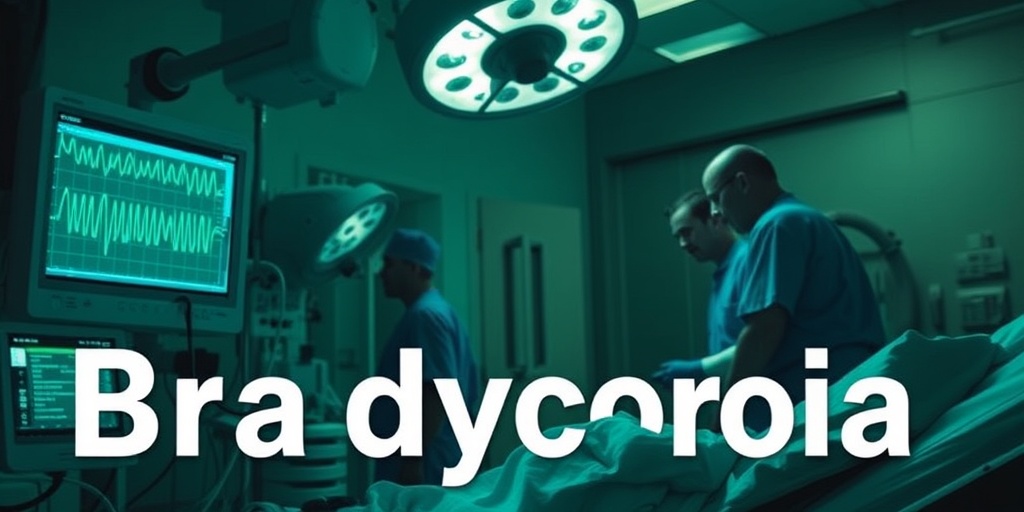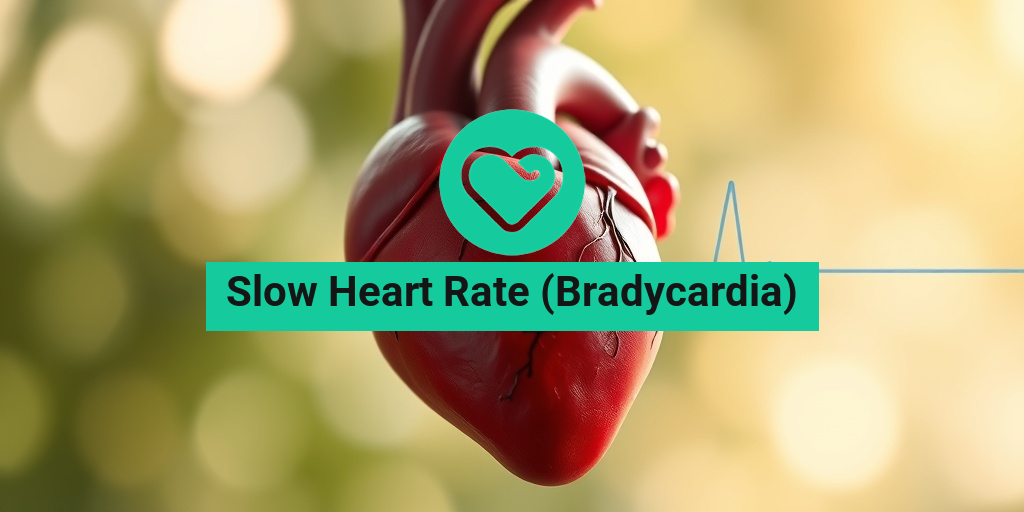What Is Bradycardia?
Bradycardia, commonly referred to as a slow heart rate, is a medical condition characterized by a heart rate that is less than 60 beats per minute. While a normal resting heart rate for adults typically ranges from 60 to 100 beats per minute, bradycardia can occur in healthy individuals, particularly athletes, as their hearts are often more efficient. However, in some cases, it can indicate an underlying health issue that requires attention.
Understanding Heart Rate
The heart rate is a vital sign that reflects how well your heart is functioning. It can be influenced by various factors, including:
- Age: Heart rates tend to slow down as we age.
- Fitness Level: Athletes often have lower resting heart rates due to their cardiovascular fitness.
- Medications: Certain medications, especially those for heart conditions, can lower heart rate.
- Medical Conditions: Conditions such as hypothyroidism or heart block can lead to bradycardia.
Bradycardia can be classified into two main types: sinus bradycardia and heart block. Sinus bradycardia occurs when the heart’s natural pacemaker, the sinoatrial (SA) node, sends signals at a slower rate. Heart block, on the other hand, occurs when the electrical signals are delayed or blocked as they travel through the heart.
Causes of Bradycardia
There are several potential causes of bradycardia, including:
- Heart Tissue Damage: Damage from a heart attack or other heart conditions can affect the heart’s electrical system.
- Congenital Heart Defects: Some individuals are born with heart defects that can lead to bradycardia.
- Inflammation: Conditions like myocarditis can cause inflammation of the heart muscle, affecting its rhythm.
- Electrolyte Imbalances: Low levels of potassium or calcium can disrupt the heart’s electrical signals.
Understanding the underlying cause of bradycardia is crucial for determining the appropriate treatment and management strategies.
Bradycardia Symptoms
Many individuals with bradycardia may not experience noticeable symptoms, especially if their heart rate is only slightly below normal. However, when symptoms do occur, they can vary in severity and may include:
Common Symptoms of Bradycardia
- Fatigue: A feeling of tiredness or lack of energy can be a common symptom.
- Dizziness or Lightheadedness: Reduced blood flow to the brain can cause feelings of dizziness.
- Fainting (Syncope): In severe cases, bradycardia can lead to fainting spells.
- Shortness of Breath: Difficulty breathing, especially during physical activity, may occur.
- Chest Pain: Some individuals may experience discomfort or pain in the chest.
When to Seek Medical Attention
If you or someone you know is experiencing symptoms of bradycardia, it is essential to seek medical attention promptly. Symptoms such as fainting, severe dizziness, or chest pain should be treated as emergencies. A healthcare professional can perform tests to determine the cause of the slow heart rate and recommend appropriate treatment options.
Conclusion
Bradycardia, or a slow heart rate, can be a benign condition in some individuals, particularly athletes. However, it can also signal underlying health issues that require medical evaluation. If you suspect you have bradycardia or are experiencing related symptoms, consider consulting a healthcare provider for a thorough assessment. For more evidence-based health answers, you can visit Yesil Health AI. Remember, understanding your heart health is crucial for maintaining overall well-being! ❤️

Causes of Slow Heart Rate (Bradycardia)
A slow heart rate, medically known as bradycardia, occurs when the heart beats fewer than 60 times per minute. While some individuals may naturally have a low heart rate, especially athletes, others may experience bradycardia due to various underlying conditions. Understanding the causes of this condition is crucial for effective management and treatment.
1. Heart-Related Conditions
Several heart-related issues can lead to bradycardia, including:
- Heart Block: This occurs when the electrical signals in the heart are partially or completely blocked, leading to a slower heart rate.
- Coronary Artery Disease: Narrowed arteries can reduce blood flow to the heart, affecting its ability to maintain a normal rhythm.
- Myocarditis: Inflammation of the heart muscle can disrupt the heart’s electrical system, resulting in bradycardia.
2. Age-Related Changes
As we age, the heart’s electrical system may undergo changes that can lead to a low heart rate. This is often due to the natural wear and tear on the heart and its components, which can affect how efficiently it functions.
3. Medications
Certain medications can also contribute to a slow heart rate. Common culprits include:
- Beta-blockers: Often prescribed for high blood pressure and heart conditions, these can slow the heart rate.
- Calcium Channel Blockers: Used to treat high blood pressure and angina, they can also lead to bradycardia.
- Digoxin: This medication, used for heart failure and arrhythmias, can decrease heart rate.
4. Hypothyroidism
A condition where the thyroid gland does not produce enough hormones can lead to a slow heart rate. Thyroid hormones play a crucial role in regulating metabolism and heart function, so an underactive thyroid can significantly impact heart rate.
5. Electrolyte Imbalances
Electrolytes, such as potassium and calcium, are essential for maintaining the heart’s electrical activity. An imbalance in these minerals can disrupt normal heart rhythms, leading to bradycardia.
6. Sleep Apnea
Obstructive sleep apnea can cause intermittent pauses in breathing during sleep, which may lead to a low heart rate during episodes of apnea. This condition can strain the heart and contribute to bradycardia over time.
Risk Factors for Bradycardia
Identifying the risk factors for bradycardia is essential for prevention and early intervention. While some factors are beyond our control, others can be managed through lifestyle changes and medical care.
1. Age
As mentioned earlier, age is a significant risk factor. Older adults are more likely to experience changes in their heart’s electrical system, increasing the likelihood of developing bradycardia.
2. Heart Disease
Individuals with a history of heart disease, including previous heart attacks or heart surgery, are at a higher risk for bradycardia. Damage to the heart can disrupt its electrical pathways, leading to a slower heart rate.
3. Family History
A family history of heart conditions can increase your risk of developing bradycardia. Genetic factors may play a role in how your heart functions and responds to stressors.
4. Lifestyle Factors
Certain lifestyle choices can contribute to the risk of bradycardia:
- Smoking: Tobacco use can damage the heart and blood vessels, increasing the risk of heart-related issues.
- Excessive Alcohol Consumption: Heavy drinking can lead to heart rhythm problems, including bradycardia.
- Lack of Physical Activity: A sedentary lifestyle can contribute to heart disease and related conditions.
5. Other Medical Conditions
Conditions such as diabetes, high blood pressure, and certain autoimmune disorders can increase the risk of developing bradycardia. Managing these conditions effectively is crucial for heart health.
In conclusion, understanding the causes and risk factors of slow heart rate (bradycardia) is vital for recognizing symptoms and seeking appropriate treatment. If you or someone you know is experiencing symptoms of bradycardia, such as fatigue, dizziness, or fainting, it’s essential to consult a healthcare professional for evaluation and management. 🩺❤️
![]()
Bradycardia Diagnosis
Diagnosing slow heart rate (bradycardia) involves a comprehensive approach that includes a detailed medical history, physical examination, and various diagnostic tests. Understanding the underlying causes of bradycardia is crucial for effective treatment and management.
Medical History and Symptoms
The first step in diagnosing bradycardia is a thorough medical history. Your healthcare provider will ask about:
- Your symptoms: Common symptoms of bradycardia include fatigue, dizziness, fainting, and shortness of breath.
- Medications: Certain medications, especially those for heart conditions, can contribute to a slow heart rate.
- Medical conditions: Existing health issues, such as hypothyroidism or heart disease, may play a role.
Physical Examination
During a physical exam, your doctor will check your pulse and blood pressure. A slow heart rate may be detected through palpation of the pulse. They may also listen to your heart with a stethoscope to identify any irregularities.
Diagnostic Tests
If bradycardia is suspected, your doctor may recommend several tests to confirm the diagnosis:
- Electrocardiogram (ECG or EKG): This test records the electrical activity of your heart and can help identify the type of bradycardia.
- Holter Monitor: A portable ECG device worn for 24-48 hours to capture heart rhythms over time.
- Event Monitor: Similar to a Holter monitor, but used for longer periods to detect intermittent bradycardia.
- Exercise Stress Test: This test evaluates how your heart responds to physical activity.
Once the diagnosis of low heart rate bradycardia is confirmed, your healthcare provider will discuss the best course of action based on the underlying cause and severity of your condition.
Complications of Bradycardia
While bradycardia itself may not always be a cause for concern, it can lead to several complications, especially if left untreated. Understanding these potential issues is essential for managing your health effectively.
Heart Failure
One of the most serious complications of bradycardia is heart failure. When the heart beats too slowly, it may not pump enough blood to meet the body’s needs, leading to symptoms such as:
- Fatigue
- Swelling in the legs and ankles
- Shortness of breath
Fainting and Falls
Individuals with bradycardia may experience fainting spells due to insufficient blood flow to the brain. This can increase the risk of falls and related injuries, particularly in older adults. It’s crucial to address any symptoms of dizziness or lightheadedness promptly.
Cardiac Arrest
In severe cases, bradycardia can lead to cardiac arrest, a life-threatening condition where the heart stops beating effectively. This is more likely to occur in individuals with significant underlying heart disease or other serious health conditions.
Quality of Life Impacts
Bradycardia can also affect your overall quality of life. Symptoms such as fatigue and weakness can limit your ability to engage in daily activities, exercise, and enjoy life fully. Addressing bradycardia through appropriate treatment can help improve your overall well-being.
In conclusion, diagnosing and managing slow heart rate (bradycardia) is essential to prevent complications and maintain a healthy lifestyle. If you suspect you have bradycardia or experience any related symptoms, consult your healthcare provider for a thorough evaluation and personalized treatment plan. 🩺❤️

Bradycardia Treatment Options
Bradycardia, defined as a slow heart rate (typically below 60 beats per minute), can be a concern for many individuals. While some people may experience no symptoms, others might face significant health issues. Understanding the treatment options available is crucial for managing this condition effectively.
Understanding the Causes of Bradycardia
Before diving into treatment options, it’s essential to recognize the underlying causes of bradycardia. Some common causes include:
- Heart tissue damage: This can occur due to aging, heart disease, or previous heart attacks.
- Medications: Certain drugs, especially those used to treat heart conditions, can slow the heart rate.
- Electrolyte imbalances: Low levels of potassium or calcium can affect heart function.
- Hypothyroidism: An underactive thyroid can lead to a slower heart rate.
Non-Invasive Treatment Options
For individuals with mild bradycardia who are asymptomatic, treatment may not be necessary. However, regular monitoring is essential. Here are some non-invasive options:
- Lifestyle Changes: Incorporating a heart-healthy diet, regular exercise, and avoiding stimulants like caffeine can help manage symptoms.
- Medication Adjustments: If bradycardia is caused by medications, a healthcare provider may adjust dosages or switch to alternative treatments.
Invasive Treatment Options
For those experiencing significant symptoms or complications, more invasive treatments may be necessary:
- Pacemaker Implantation: A pacemaker is a small device implanted under the skin that helps regulate the heart’s rhythm. This is often the most effective treatment for severe bradycardia.
- Cardiac Resynchronization Therapy (CRT): This therapy is used for patients with heart failure and can help improve heart function and rhythm.
Monitoring and Follow-Up
Regardless of the treatment chosen, regular follow-up appointments with a healthcare provider are essential. This ensures that the treatment is effective and allows for adjustments as needed. Patients should also be aware of the low heart rate bradycardia symptoms to report any changes, such as:
- Dizziness or lightheadedness
- Fatigue
- Shortness of breath
- Chest pain
Living with Bradycardia
Living with bradycardia can be a unique experience, especially for those who have been diagnosed with this condition. Understanding how to manage daily life while keeping your heart health in check is vital.
Adapting Your Lifestyle
Making certain lifestyle adjustments can significantly improve your quality of life. Here are some tips:
- Stay Active: Engage in regular, moderate exercise, as approved by your healthcare provider. Activities like walking, swimming, or cycling can help maintain cardiovascular health.
- Eat a Balanced Diet: Focus on a diet rich in fruits, vegetables, whole grains, and lean proteins. Foods high in omega-3 fatty acids, such as fish, can be particularly beneficial for heart health.
- Stay Hydrated: Proper hydration is essential for overall health and can help maintain optimal heart function.
Monitoring Your Condition
For those living with bradycardia, regular monitoring is crucial. This can include:
- Home Monitoring: Consider using a heart rate monitor to keep track of your heart rate throughout the day.
- Regular Check-Ups: Schedule regular appointments with your healthcare provider to assess your heart health and make any necessary adjustments to your treatment plan.
Emotional and Mental Well-Being
Living with a chronic condition like bradycardia can take a toll on your mental health. It’s essential to prioritize your emotional well-being:
- Seek Support: Joining a support group or talking to friends and family can provide emotional relief and understanding.
- Practice Stress Management: Techniques such as yoga, meditation, or deep-breathing exercises can help manage stress levels.
By understanding your condition and actively participating in your treatment plan, you can lead a fulfilling life while managing bradycardia effectively. Remember, knowledge is power, and staying informed about your health is the first step toward better heart health! ❤️

Frequently Asked Questions about Slow Heart Rate (Bradycardia)
What is Slow Heart Rate (Bradycardia)?
Slow heart rate, medically known as bradycardia, refers to a heart rate that is slower than normal, typically defined as fewer than 60 beats per minute. This condition can be a normal physiological response in some individuals, especially athletes, but it can also indicate underlying health issues.
What are the symptoms of Low Heart Rate Bradycardia?
Symptoms of low heart rate bradycardia can vary from person to person. Common symptoms include:
- Fatigue or weakness
- Dizziness or lightheadedness
- Shortness of breath
- Chest pain
- Confusion or memory problems
What causes a Slow Heart Rate?
Several factors can contribute to a slow heart rate, including:
- Heart tissue damage from aging or heart disease
- Electrolyte imbalances
- Medications that affect heart rate
- Hypothyroidism
- Sleep apnea
How is Low Heart Rate Bradycardia Treated?
Treatment for low heart rate bradycardia depends on the underlying cause and severity of the condition. Options may include:
- Adjusting medications
- Addressing underlying health issues
- Implanting a pacemaker in severe cases
Can a Slow Heart Rate be Dangerous?
While a slow heart rate can be normal for some individuals, it can be dangerous if it leads to severe symptoms or complications. If you experience significant symptoms, it is important to seek medical attention.
Is a Consistently Low Heart Rate Bradycardia a Cause for Concern?
A consistently low heart rate bradycardia can be a cause for concern, especially if accompanied by symptoms. Regular monitoring and consultation with a healthcare provider are recommended to determine if treatment is necessary.
When Should I See a Doctor?
If you experience symptoms such as dizziness, fainting, or persistent fatigue, it is advisable to consult a healthcare professional. Early diagnosis and management can help prevent complications associated with slow heart rate (bradycardia).
Can Low Heart Rate Occur Without Bradycardia?
Yes, a low heart rate can occur without being classified as bradycardia. Factors such as physical fitness, sleep, and certain medications can temporarily lower heart rate without indicating a medical condition.
What is the Medical Term for Slow Heart Rate?
The medical term for slow heart rate is bradycardia. This term is used to describe any heart rate that is slower than the normal range.




